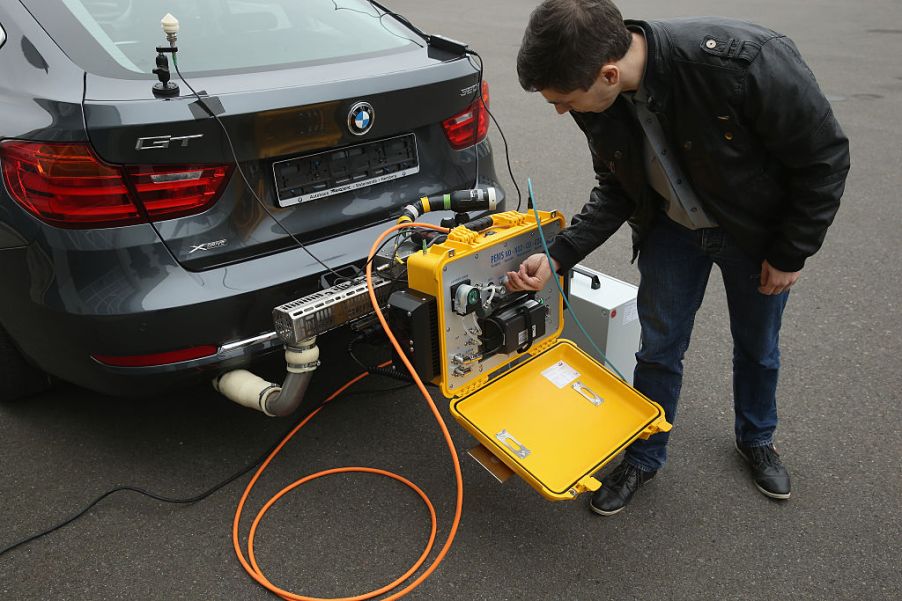
What Do They Test for in an Emissions Inspection?
Emissions testing checks for the number of air pollutants coming out of a car’s exhaust. Emissions inspections first began in California in 1966 to combat smog. Currently, only about 32 states require emissions testing, with wildly varying requirements based on things like the car’s age, fuel type, or location. There are two types of emissions tests, but what exactly are they testing for, and what happens if you fail?

OBD emissions inspection
When you bring your vehicle in for a state emissions test, the first thing technicians will do is hook your car up to a computer for an OBD test.
An OBD emissions test stands for On Board Diagnostics, and is also known as a DSL test. This measures the efficiency of the vehicle’s engine control module or ECM. This needs to function properly because it is continuously checking the exhaust system and monitors the catalytic converter while the car is driving. It also monitors the transmission, engine, and fuel system.
The OBD inspection makes sure the ECM is operating at the correct standards for the vehicle. It checks for evaporative emissions and basic exhaust emissions.
In vehicles from 1996 and later, inspectors just connect to the module with a scan tool that gives them the ECM’s status. OBD tests do a lot more than check emissions. It evaluates everyday driving and detects poor performance, bad fuel economy, and high emissions long before the driver does.
Exhaust gas analysis
The Exhaust Gas analysis is more thorough than the OBD test and can pinpoint problems more precisely. Inspectors place an exhaust line gas analyzer directly into the tailpipe to measure exhaust gases, which are:
- carbon monoxide
- hydrocarbon
- carbon dioxide
- oxygen
- nitrogen oxide
There are either four-gas analyzers that measure the first four exhaust gases or five-gas analyzers which add nitrogen oxide. Diesel exhaust gas analyzers measure soot emissions, also known as particulate matter.
You can even buy your own exhaust gas analyzer to use at home to test your vehicle’s emissions, although that won’t help you get your inspection sticker. However, it can give you some warning that you need to make repairs, and what those repairs are, before you spend the money on a full inspection.
What happens when a car fails an emissions test?
It’s never good news when your car, truck, or SUV fails the state emission test. There are many different mechanical problems that can cause vehicles to fail emission tests.
Pollutants can be emitted because of a faulty fuel injector. This can lead to rich fuel, a word for fuel with not enough air in it. This leads to high levels of carbon dioxide.
Another problem can be the air injection system. This is supposed to force fresh air directly into the exhaust system. If the air injection system isn’t working properly, testing may reveal high levels of carbon monoxide and/or hydrocarbons.
A vehicle’s oxygen sensor can also fail or malfunction, causing a vehicle to fail. Other problems include defects in the ignition system or vacuum leaks in the vehicle. If a vehicle does fail an emission test at a state-licensed facility, the department of motor vehicles in that state will not register the car.
Usually, you have a certain number of days to correct the issue and have the vehicle retested. If it fails a second time, some states may give you a waiver, but it is likely you will not be able to get a valid registration.
Some states have no emissions testing at all. California has the strictest emissions regulations in the nation, and about a dozen other states have adopted their standards.


